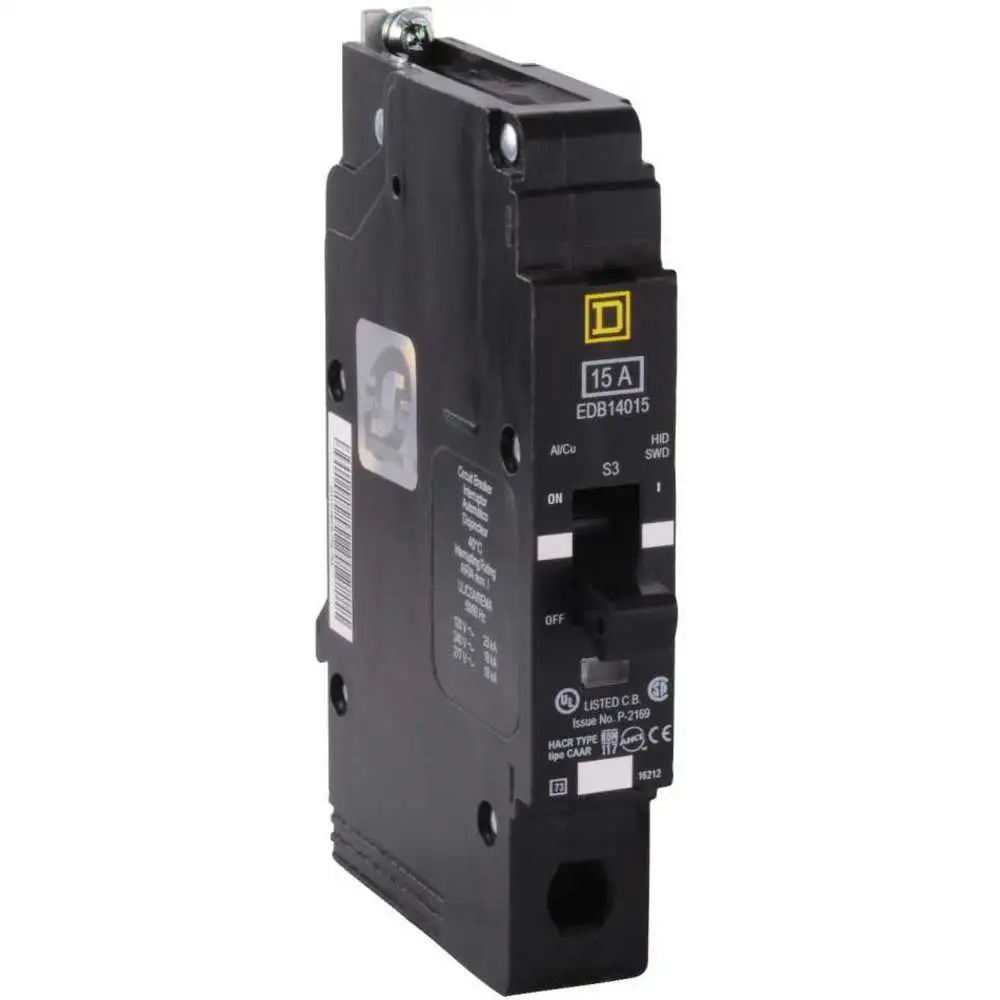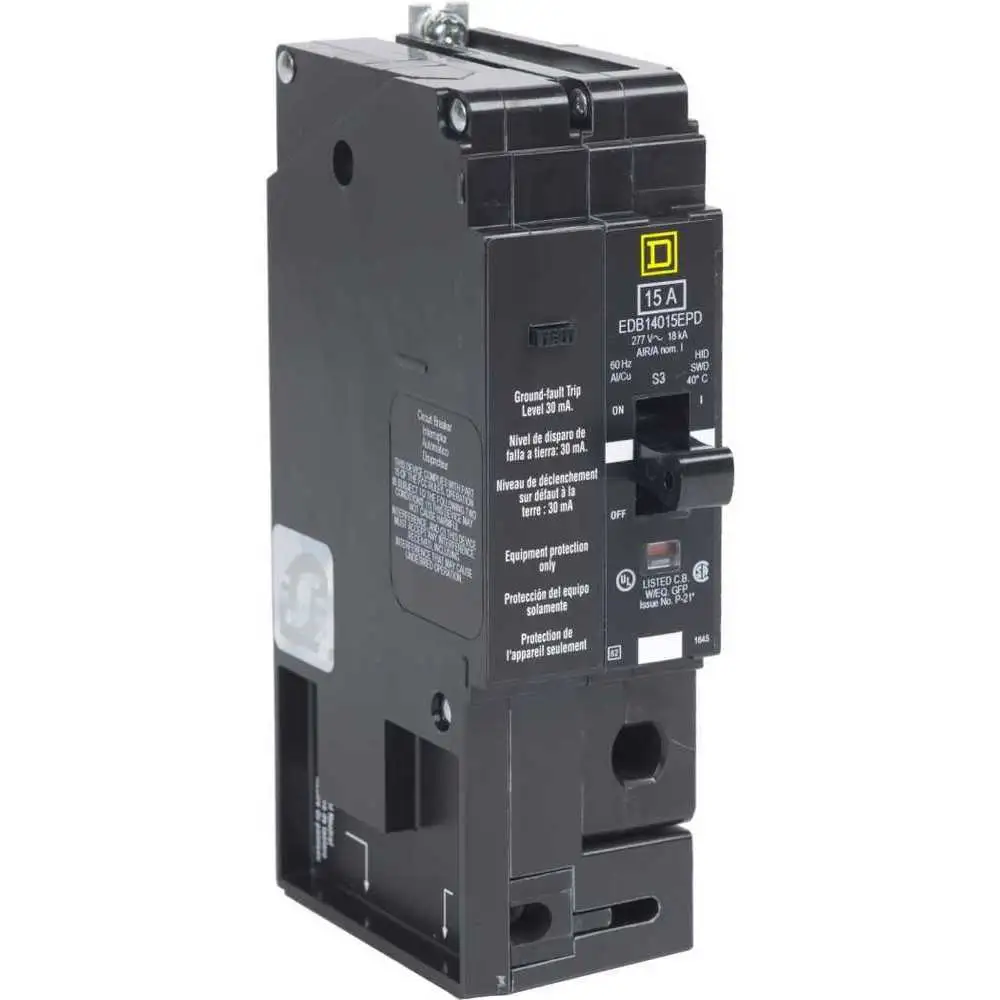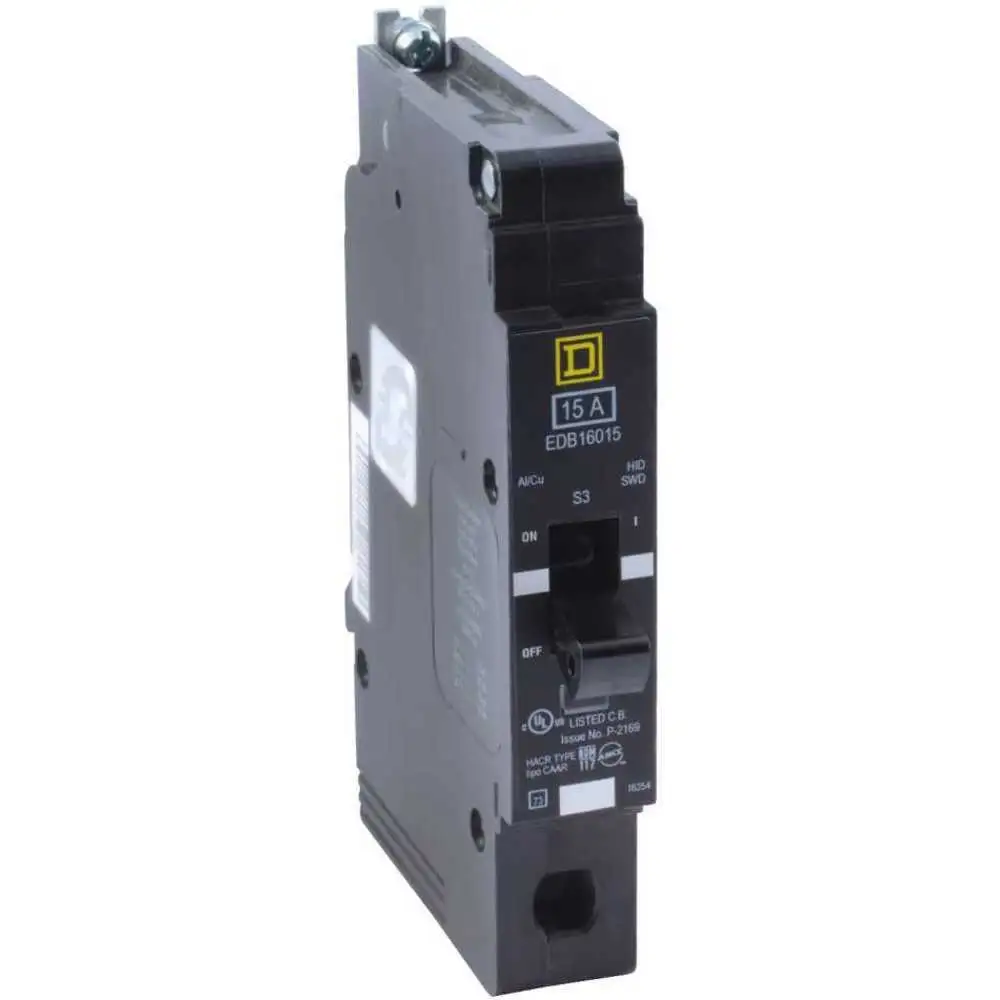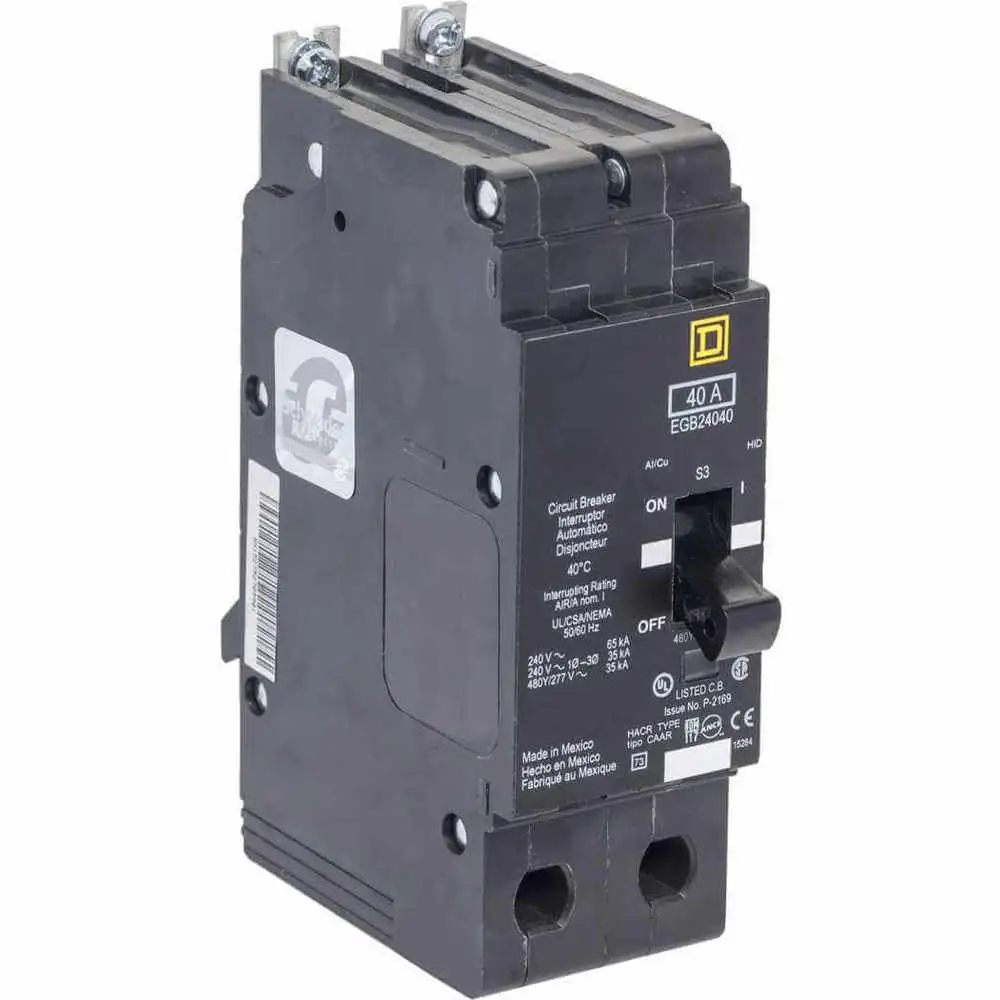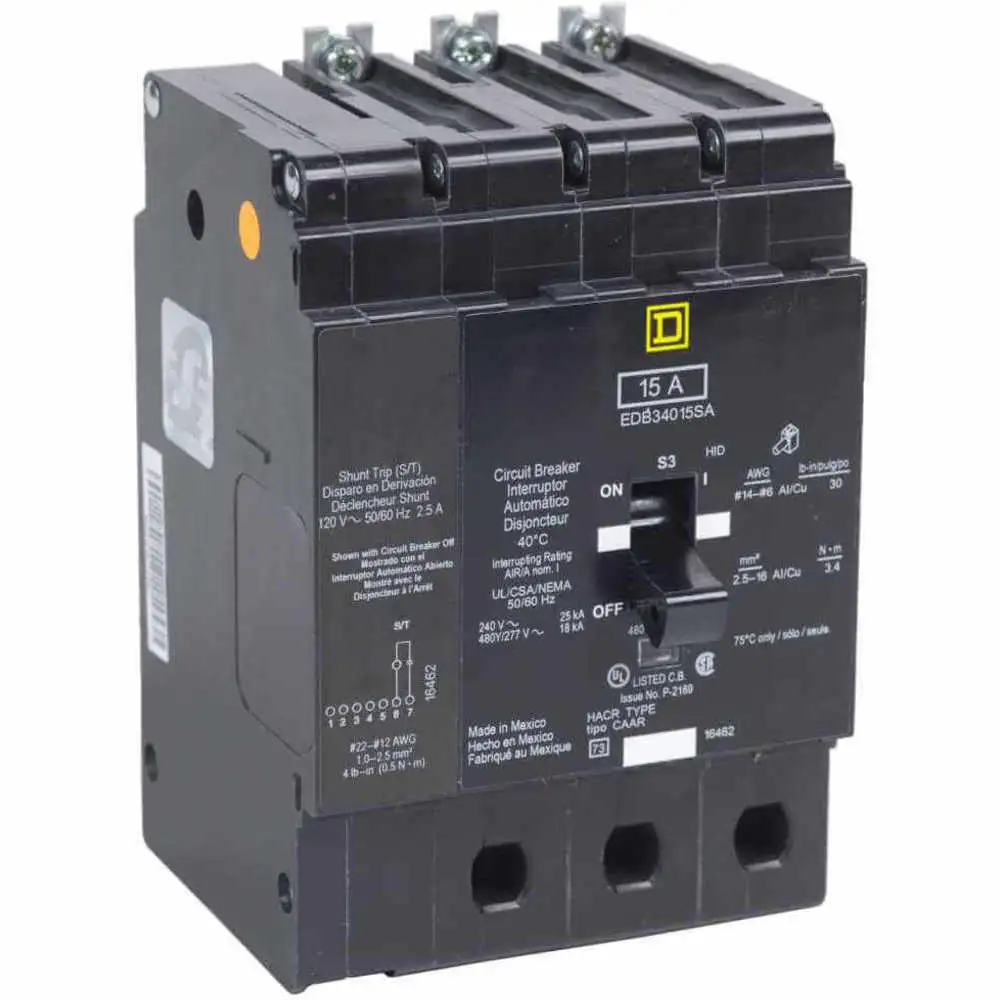Square D EDB34040SA circuit breaker is utilised in electrical systems to safeguard against excessive current, preventing damage to equipment and potential hazards. It is used in panel boards, switchboards and distribution boards, enhancing electrical safety in diverse environments. This circuit breaker has a current rating of 40A and is suitable for three-phase systems. It features a shunt trip mechanism, allowing for remote operation and enhancing safety by quickly tripping the circuit. This breaker is compatible with Square D NF panelboards and is mounted using a bolt-on style for secure installation. It comes with a maximum interrupting rating of 18kA at 277 / 480VAC. This circuit breaker has a maximum temperature of 104 degrees F and features a lug terminal connection type to ensure a secure & reliable attachment of wires to the circuit breaker.
Working Mechanism:
- It safeguards electrical circuits by responding to overcurrent conditions.
- Excess current generates a magnetic field via an internal coil.
- This magnetic field triggers a tripping mechanism, rapidly opening the breaker.
- Quick response prevents overheating and ensures electrical safety.
Frequently Asked Questions:
Q. What is a 3-pole circuit breaker?
A. A 3-pole circuit breaker has three separate switching mechanisms or poles that can simultaneously disconnect all three phases of a three-phase electrical system. It is used in systems with multiple phases to ensure balanced protection.
Q. What is the current rating of this Square D EDB34040SA circuit breaker?
A. This circuit breaker is designed to handle a maximum continuous current flow of up to 40A without tripping.
Q. How to maintain this EDB34040SA circuit breaker?
A.
- Visually inspect the circuit breaker for damage or discolouration.
- Keep the breaker and its surroundings clean to prevent overheating.
- Exercise the breaker manually to prevent internal components from stagnating.
- Test the breaker's functionality using its test button periodically.
- Inspect wires for wear, damage or loose connections and address issues promptly.
- Check and ensure that all labels and markings on the breaker are legible.
- Monitor load balance in three-phase systems to prevent premature wear.
 Change Country
Change Country
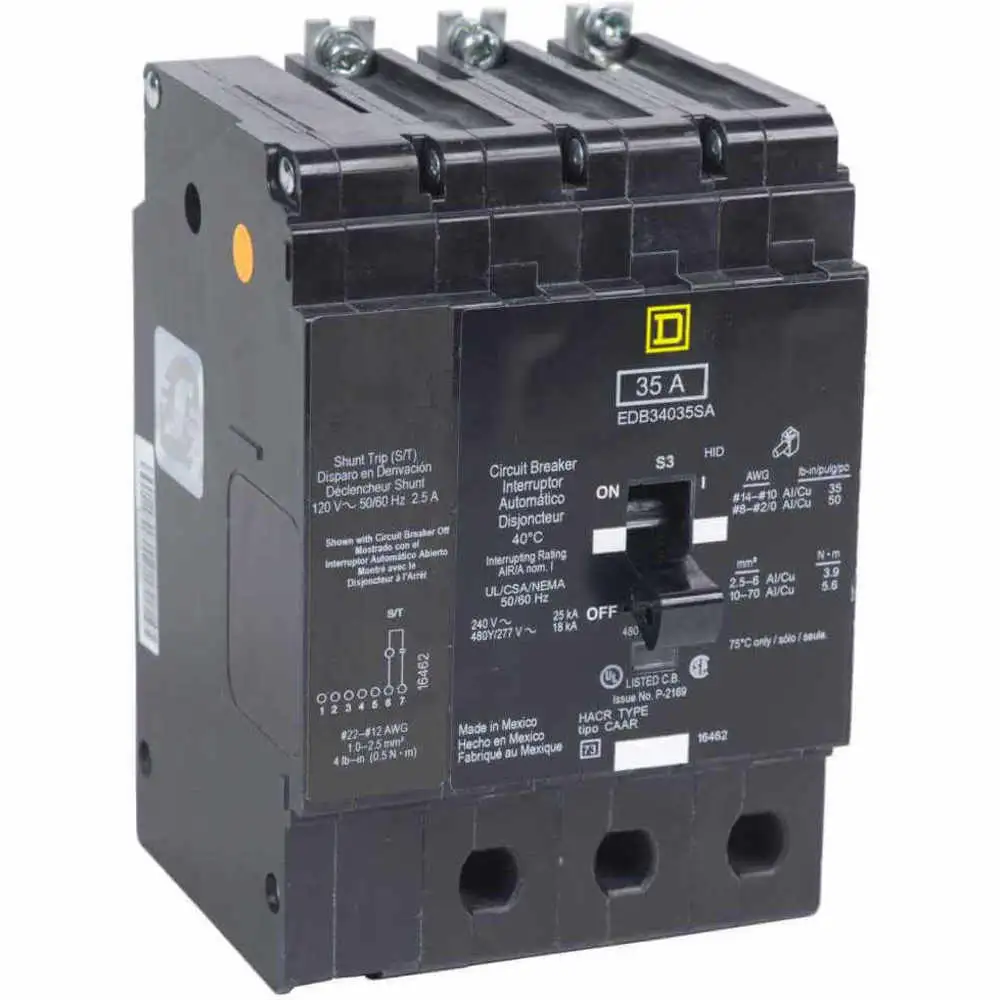
 In Stock : 5 Units
In Stock : 5 Units